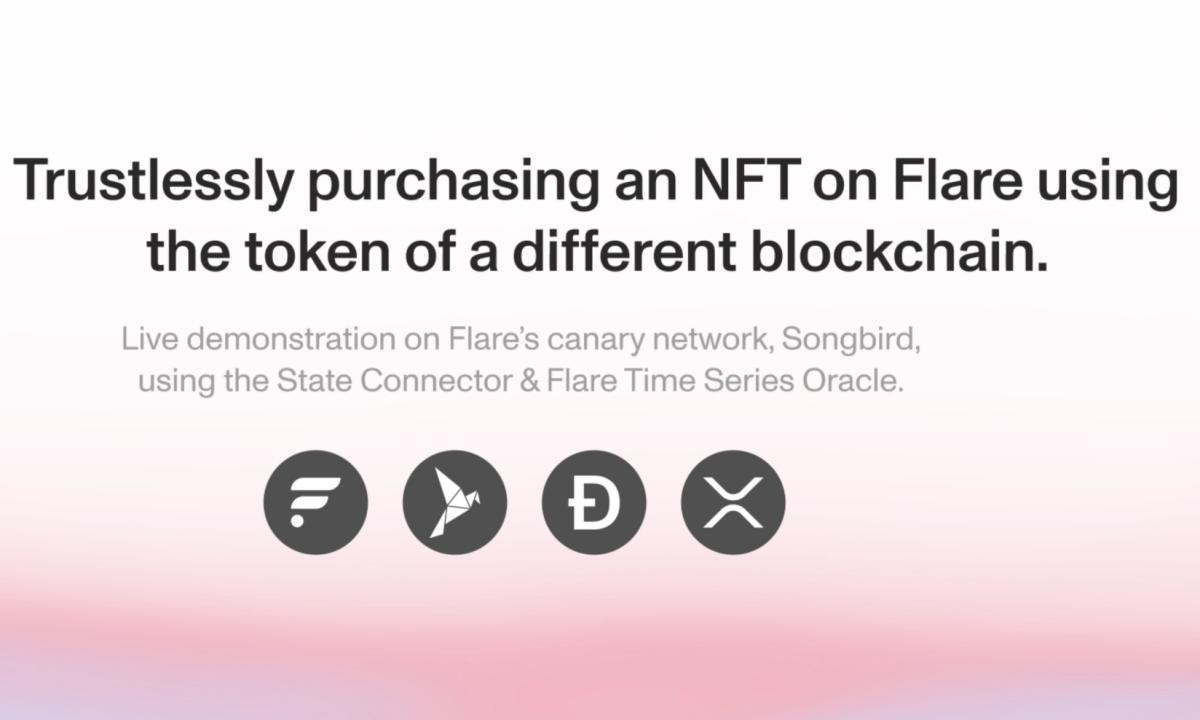Flare, the layer-1 for data, has just finished a live demonstration of new interoperability functionality that is currently available in beta. An NFT was trustlessly purchased using two fundamental interoperability protocols, State Connector and Flare Time Series Oracle (FTSO), even though the transaction occurred on a different chain and involved a different token. Songbird, Flare’s canary network, was used for the demo, and DOGE and XRP tokens were used for payment.
With the help of EVM-based smart contracts on Flare chains, information from other blockchains and the internet can be used securely, scalable, and trustlessly. In this instance, it was used to demonstrate that a transaction had been approved on a non-Flare chain and to confirm that the right payment reference had been used.
The Time Series of Flares Without relying on a centralized provider to bring the data on-chain, Oracle provides highly decentralized prices, and data feeds to dapps on Flare. It offers the live-updating price of the NFT in the currency of the other chain for the demonstration.
Everything that can be done on Ethereum and other EVM chains can also be done on Flare because it is an EVM-based blockchain. Therefore, the ERC721 contracts created in Solidity and deployed on the network are the NFTs created in the demo. The only adjustments needed were new FTSO and State Connector integration techniques.
“This demo highlights Flare’s ability to provide more types of secure, decentralized data on-chain in order to power new functionality and potential use cases for the industry. The NFT demo is one example of the web3 utility Flare can unlock for legacy tokens, enabling them to be used trustlessly in dapps on the network. We are excited to see what other applications engineers can develop, harnessing the capabilities of Flare’s native interoperability protocols.” – Hugo Philion, Flare CEO & Co-founder.”
Flare
Developers have decentralized access to high-integrity data from other chains and the internet thanks to Flare, an EVM-based Layer 1 blockchain. As a result, new use cases and business models can be created, and apps can now serve multiple chains with a single deployment.
Information from other blockchains and the internet can be used securely, scalable, and trustlessly with smart contracts on Flare thanks to the State Connector protocols.
Build on Flare to serve multiple ecosystems or build on Flare with more data than ever before.







